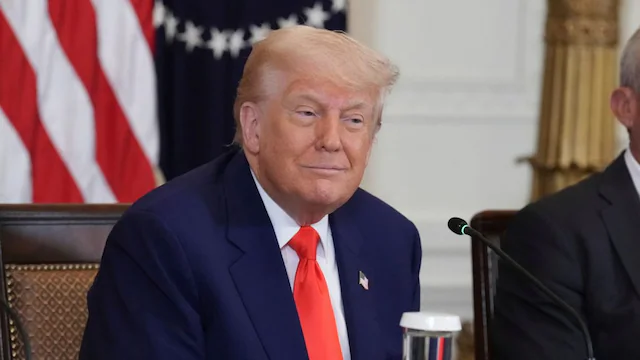- Courses
- GS Full Course 1 Year
- GS Full Course 2 Year
- GS Full Course 3 Year
- GS Full Course Till Selection
- Online Program
- GS Recorded Course
- NCERT (Recorded 500+ Hours)
- Polity Recorded Course
- Geography Recorded Course
- Economy Recorded Course
- AMAC Recorded Course
- Modern India, Post Independence & World History
- Environment Recoded Course
- Governance Recoded Course
- Science & Tech. Recoded Course
- International Relations and Internal Security Recorded Course
- Disaster Management Module Course
- Ethics Recoded Course
- Essay Recoded Course
- Current Affairs Recoded Course
- CSAT
- 5 LAYERED ARJUNA Mentorship
- Public Administration Optional
- ABOUT US
- OUR TOPPERS
- TEST SERIES
- FREE STUDY MATERIAL
- VIDEOS
- CONTACT US
Tyre Particles: How EVs are a climate solution with pollution problem
Tyre Particles: How EVs are a climate solution with pollution problem
30-05-2025

- Recently, The study in the Royal Society of Chemistry journal found that electric vehicles, being heavier, actually wear down their tires more than regular cars.
- This leads to them releasing a lot more tiny plastic bits into the air.
- Thus questioning the overall eco-friendliness of EVs.
What are Environmental Concerns Regarding EVs :
Even though EVs don't release emissions from their exhaust pipes, they come with other environmental problems:
- Tyre Microplastic Pollution:
- EVs are typically 15–20% heavier than internal combustion engine (ICE) vehicles.
- This is because their battery packs can weigh between 300–900 kg, which puts more stress on their tyres and causes them to wear out faster.
- How Particles Are Released:
- When tires wear down, they release tiny plastic bits.
- Primary fragmentation, for example, happens from sudden braking or hitting bumps on the road, creating very small particles.
- Sequential fragmentation happens from everyday driving, producing slightly larger particles.
- Where Particles Go:
- The smaller fragments (1–10 μm) stay floating in the air, adding to air pollution.
- The larger ones (>100 μm) settle on roads, which can then affect soil and water.
- Impact of Speed: Fast acceleration in EVs also increases friction and heat on the tires, making the release of microplastic emissions even worse.
- So, while EVs reduce tailpipe emissions, they increase another type of pollution called non-exhaust pollution. This presents a tricky environmental balance.
- Lithium-Ion Battery Hazards:
- Making a single EV puts about 16–19 tonnes of CO₂ into the atmosphere.
- This is almost twice as much as making an ICE vehicle, which typically releases 7–10 tonnes.
- Producing just 1 tonne of lithium needs roughly 1.89 million liters of freshwater.
- This can seriously affect groundwater levels and natural ecosystems, especially in dry areas where mining takes place.
- The leftover materials like cobalt and lithium residues from batteries can take hundreds of years to break down.
- If not handled properly, they pose long-term risks to human health and the environment.
- Recycling and Waste Management Shortages:
- Too often, EV batteries end up in landfills once they are damaged or reach their end-of-life.
- This is because there isn't enough proper recycling infrastructure in place to handle them.
- The cobalt and lithium residues can remain harmful for centuries if not managed well.
- Reliance on Grid & Fossil Fuels:
- An EV is only as environmentally friendly as the electricity grid that powers it.
- India’s electricity grid still largely relies on coal.
- Coal-fired power plants release a lot of CO₂ (800–850g per kilowatt-hour), and this is the electricity that powers most EVs in India.
- Many public charging stations, perhaps surprisingly, run on diesel generators, which actually increases emissions.
What are Weaknesses in EV Regulation in India
- Uneven and Broken-Up Policy Implementation:
- Current air pollution standards mainly focus on particulate matter (PM) 2.5 and PM10.
- However, tyre particles are often smaller and are not currently regulated.
- There are no proper standards that fully address non-exhaust emissions like tyre and brake wear.
- India is woefully unprepared to manage the massive amount of EV battery waste that is expected in the coming decade.
- India lacks strong laws to prevent the illegal dumping of spent lithium-ion batteries.
- The current legal setup, including the E-waste (Management and Handling) Rules, 2011, E-waste (Management) Rules, 2016, and the 2018 amendment, has changed over time in terms of what it covers.
- However, it still doesn't provide a complete and specific plan for the safe disposal and recycling of EV batteries.
- This gap in the rules means India could become a place where both local and imported battery waste is simply dumped.
- Government programs aimed at promoting EVs, like FAME-I and II, have had limited success because their implementation has not been consistent across the country.
- While some states like Gujarat and Delhi have strong policies, many don't even have a basic EV roadmap.
- The absence of common rules across states makes it difficult to expand EV use across the entire nation.
- Limited Reach of Government Helps:
- Most EV efforts primarily focus on 3-wheelers and buses in specific city areas.
- This means a big chance to get people in rural and semi-urban places to adopt EVs is being missed.
- Current EV efforts are mainly for travel within cities.
- There isn't a clear plan for making long-distance travel between cities electric.
- Charging Infrastructure Gaps:
- The current charging infrastructure is not enough and not well-developed, especially outside big cities.
- There is no national standardisation of charging equipment and battery technologies.
- This results in compatibility issues, meaning different EV brands and charging stations don't always work together smoothly.
- The high cost (around ₹1 crore or more) for setting up a charging station is a major obstacle.
- This is especially true if there's no guaranteed demand for its use.
- No Specific Regulatory Authority:
- Currently, there is no single agency or department dedicated to EV regulation and coordination that works across all the relevant government departments, such as Transport, Power, Renewable Energy, and Environment.
- This absence of a unified institutional mechanism slows down quick decision-making, proper monitoring, and fast responses to what the EV industry needs.
- Not Enough Focus on Supply Chain Security:
- India does not have a secure and varied supply of important raw materials like lithium (India imported 70% of its lithium-ion cells in 2023), cobalt, and rare earth elements.
- These are all needed for making EV batteries.
- There is no comprehensive national strategy to build local reserves, create international partnerships, or encourage local alternatives (like sodium-ion batteries).
- Limited Consumer Knowledge and Adoption Support:
- Fewer people are buying EVs because there's limited public awareness about the benefits of EVs.
- They worry about how far the car can go on one charge (range anxiety) and battery concerns, and not enough promotion of home or local charging options.
How Can India Balance EV Growth with Environmental Sustainability?
- Encourage EV and battery manufacturing to be powered by renewable energy.
- Under schemes like the PLI for Advanced Chemistry Cell (ACC) batteries, the manufacturing process should be linked to practices that produce less carbon.
- Integrate solar and wind energy with public and private EV charging stations. Initiatives like PM-KUSUM and PM Surya Ghar Muft Bijli Yojana can help provide local, clean electricity for charging.
- Encourage Vehicle-to-Grid (V2G) technologies, which can help balance inconsistent renewable sources by allowing EVs to send power back to the grid when needed.
- Implement a strong system for battery recycling and reuse. India's Battery Waste Management Rules, 2022, make Extended Producer Responsibility (EPR) mandatory for battery makers. This rule ensures batteries are managed in a way that's good for the environment.
- The EU’s “Battery Passport” model, which tracks a battery's carbon footprint and full lifecycle, could be copied in India to make things more clear and transparent.
- Create a National EV Regulatory Authority to work together across different government departments like Transport, Power, Environment, and Industry.
- Provide incentives for Green Supply Chains and encourage making parts locally. Also, encourage green logistics (eco-friendly transport and storage) in PLI schemes.
- India must form strategic partnerships, such as the Lithium-Deal with Argentina, to ensure it gets important raw materials like lithium, cobalt, and nickel in an ethical way, with clear tracking of where they come from.
- Launch national campaigns to inform people about the money and environmental benefits of EVs. These could be similar to the successful Ujala LED campaign.
- Promote home charging solutions and offer smart charging incentives to manage the electricity grid's load efficiently.
- Integrate EV planning with the National Electric Mobility Mission Plan (NEMMP) and the Smart Cities Mission.
- Encourage mixed-use developments (where homes, shops, and offices are close together), integrate NMT (non-motorized transport) options like cycling and walking, and create EV-first zones in city planning.
- For example, Oslo's low-emission zones and city-wide EV parking benefits effectively reduce urban air pollution.
- Establish a specific environmental impact agency for EVs to track carbon emissions, their life-cycle impact, and how battery disposal is handled.
- Include EVs in India’s carbon market framework, which allows for tradable emission reductions.
- Ensure that EV policies align with India’s Nationally Determined Contributions (NDCs) under the Paris Agreement.
India’s Key Initiatives to Promote EV Adoption
- PM E-DRIVE Scheme
- New Electric Vehicle Policy 2024
- Faster Adoption and Manufacturing of Electric Vehicles (FAME) Scheme II
- National Electric Mobility Mission Plan (NEMMP)
- National Mission on Transformative Mobility and Battery Storage
- Production Linked Incentive (PLI) scheme
- Go Electric campaign
|
Also Read |
|
| Public Administration Optional | |
| UPSC Monthly Magazine | Question Answer Practice For UPSC |



